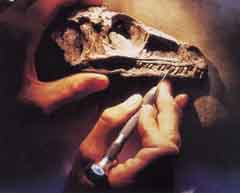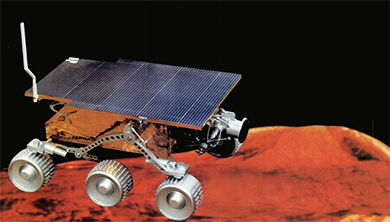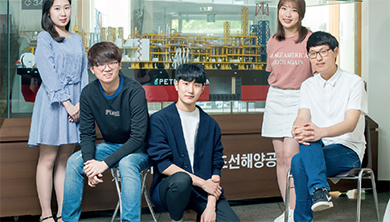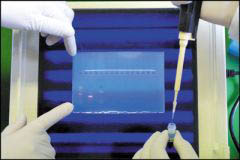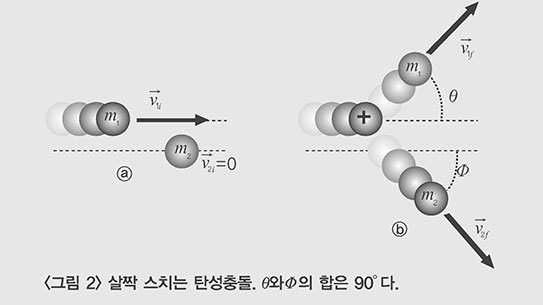빅토리아시대에 중산층이상의 '숙녀들'은 전혀 쓸모없는 사람들로 여겨졌었다. 여자들이란 그림이나 조금 그리고 피아노나 약간 칠 정도의 교양교육을 받았으며 혹 부유한 경우라면 옷을 사거나 파티에 참석하고 잡담이나 하는 등으로 시간을 소모하며 세월을 보냈다.
따라서 이 정도가 되지 못하는 서민층 여자들은 자연히 교육은 별로 받지 못한 채 생활고를 해결하기 위해 일을 할 따름이었다.
물론 언제나 예외는 있었다. 카롤린 루크레티아 허셸(1750년생)은 독일여자였다. 그녀는 먼저 영국에서 오르간 연주자로 활동하던 오빠를 찾아가 성악가가 되기 위한 연습에 열중했다. 그러나 이들 남매는 흥미진진한 천문학에 모든 정열을 바치고자 음악계를 떠났다.
카롤린은 결혼도 하지않고(98세까지 살았지만) 그녀의 모든 것을 오빠가 하는 일에 투자했다. 시간이 있을 때면 그녀는 오빠가 만들어 준 조그마한 망원경으로 하늘을 관찰하곤 했다. 카롤린의 관찰은 훌륭했으며 그녀는 세계 최초의 여성천문학자로 기록되고 있다. 특히 그녀는 혜성들을 열심히 찾았는데 무려 8개나 발견했다.
오빠의 사망후 카롤린은 독일로 귀국했으나 여전히 조카되는 존 허셸의 천문학적 성공을 즐기며 살았다.
미국 최초의 여성 천문학자는 마리아 미첼(1818년생)이었다. 그 당시만 해도 교육을 받을 수가 없었던 그녀는(여자는 학교교육을 받을 수 없었으므로)상당한 지식을 갖춘 아마추어 천문학자였던 아버지로부터 비공식적인 천문학 교육을 받았다.
1847년 10월1일, 그녀는 혜성 하나를 발견함으로써 곧 과학계의 주목을 받았다. 1849년에는 미국항해국에 고용되어 천문학적 계산에 몰두했다. 그리고 1865년에는 바사에 위치한 신설 여자대학의 천문학 교수로 임명되었다. 따라서 자신이 즐기던 일과 여자들도 고등교육을 받을 수 있도록 만드는 것 중에서 하나를 선택할 수밖에 없었다. 그녀는 후자를 선택했으며 목숨이 다할 때까지 바사대학에 몸담았다.
미첼의 천문학적 업적은 대단한 편이 아니었지만 사회로부터 어떠한 도움도 받지않고 여자들을 집에서 멍청하게 있도록 만드는 그 모든 견해에 대항하여 이룩한 것이었다. 그녀는 미국 인구의 억압받던 절반을 상징하는 높은 표준이었으며 미국 문예과학원 최초의 여성회원이 되었다.
애니 점프 케논(1863년생)은 미국 주상원의원의 딸이었다. 그녀는 새로 설립된 웰슬리 대학에서 교육받고 1884년에 졸업한 후 1894년엔 천문학 공부를 더 하기위해 다시 학교로 돌아왔다. 나아가 추가교육을 받기 위해 레드클리프 대학으로 전학했으며 1896년엔 하버드대학 천문연구소에 취직해 남은 인생을 그곳에서 보냈다.
그녀는 사진으로 촬영된 많은 별들의 스펙트럼을 분류하는 작업에 특히 흥미를 가져 분류법을 고안해냈으며 하버드대학은 그후 줄곧 이 분류법을 사용해 오고 있다. 그녀는 아주 예외적인 경우를 제외하곤 스펙트럼들이 연속된 열로 배열될 수 있음을 보여주었다. 그녀의 연구 결과는 '헨리 드레이퍼 카탈로그'의 토대가 되었는데 이 목록은 후에 9,10등급 이상되는 22만5천3백여개 별들의 스펙트럼 분류체계를 포함하기에 이르렀다.
1925년 그녀는 옥스포드대학으로부터 최초로 명예박사학위를 받은 인물이 되었다.
헨리에타 스완 리빗(1868년생)은 조합교회 목사의 딸로서 1892년 레드클리프대학을 졸업하였다. 그리고 1902년엔 하버드대학의 연구원이 되었다. 그녀는 아주 세밀하게 별의 광도를 따져 2천4백개의 변광성을 발견함으로써 그 당시까지 알려진 변광성의 수를 두배로 늘렸다.
그녀 생애의 가장 위대한 순간은 페루에 있는 하버드 천문대에서 우리 은하계 밖에 존재하는 수많은 별들의 집단인 마젤란성운을 연구하던 1912년에 있었다. 마젤란성운의 별들은 모두가 우리로부터 거의 비슷한 거리상에 위치해 있는데 이는 전체(지구로부터)거리에 비해 별들간의 사이가 짧기 때문이다.
그녀는 그 성운 속의 케페이드 변광성들을 연구했다. 이들은 (밝게 그리고 희미하게 규칙적으로) 고동치는 별들이다. 1904년 리빗은 밝고 희미한 주기가 길면 길수록 별의 평균광도가 높음을 알아냈다. 1912년 그녀는 다양한 케페이드 변광의 상대적 거리를 측정하는 방법을 고안해냈다.
케페이드 변광성들은 우주의 엄청난 거리를 측정할 수 있는 최초의 방법을 제공해 주었으며 이로써 우주에 대한 인간의 지식도 크게 신장됐다. 그러나 이를 자세히 밝혀냄으로써 공로를 인정받은 사람은 할로우 샤플리였다(어쨌거나 그는 남자였기 때문이다).
이런 일은 자주 발생한다. 1969년에 조셀린 벨은 맥동성들을 발견했다. 그러나 이 발견 덕택에 노벨상을 받은 이는 그녀의 상사였다(물론 남자였다). 벨양은 두 어깨를 움츠리며 현실을 인정해야만 했다.
In Victorian times, "ladies" were thought to be thoroughly useless. They were taught to paint a little or play a bit of piano and, if they had money enough, they spent their time buying clothes, attending parties, flirting and, in other ways, trying to pass the time.
Naturally, women who were not "ladies" worked for a living, though generally doing so without much of an education.
There were always exceptions, of Course. Caroline Lucretia Herschel (born 1750) was a German who joined her brother, William, who had earlier gone to England where he was an organist and where she was training to be a concert singer. Both, however, gave up their musical careers for their all-consuming interest in astronomy.
Caroline never married (though she lived to be 98) and submerged herself almost completely in her brother's career. In what spare time she could find, she observed the heavens on her own with a small telescope her brother had made for her. She did good work and became the first woman astronomer of note. She searched for comets in particular and discovered eight of them.
After her brother's death, Caroline returned to Germany but enjoyed the astronomical success of her nephew, John Herschel.
The first American woman astronomer was Maria Mitchell (born in 1818). There was no way she could obtain an education in those days (not for women) but she had a father who was an accomplished amateur astronomer and he gave her an informal education in astronomy.
On Oct 1, 1847, she discovered a comet, which at once brought her to the attention of the world of science. In 1849, she was employed by the U.S. Nautical Office where she engaged in astronomical computations. In 1865, she was appointed professor of astronomy at the newly founded woman's college at Vassar. She had to choose between doing a job she loved and making it possible for women to receive a higher education. She chose the latter, retaining her Vassar position until her death.
Her astronomical achievements were moderate, but they were done without any help from society at large and against all the assumptions that kept women brainlessly at home. She represented a high standard for the oppressed half of the American population and was the first woman member of the American Academy of Arts and Sciences.
Annie Jump Cannon (born 1863) was the daughter of a state senator. She was educated at the newly established Wellesley College, graduating in 1884, then returned in 1894 for additional instruction in astronomy. She went on to study still further at Radcliffe and, in 1896, she joined the staff at Harvard Observatory and remained there the rest of her life.
She was particularly interested in the task of classifying the large numbers of stellar spectra that had been photographed and developed a classification system that Harvard used ever since. She showed that with very few exceptions, the spectra could be arranged into a continuous series. Her work formed the basis of the "Henry Draper Catalogue," which eventually come to contain the spectral classification of 225,300 stars brighter than the ninth or 10th magnitude.
In 1925, she became the first person ever to receive an honorary doctorate from Oxford University.
Henrietta Swan Leavitt (born 1868) was the daughter of a Congregational minister and graduated from Radcliffe College in 1892. She joined the staff on Harvard University in 1902. In her meticulous determinations of stellar magnitudes, she discovered 2,400 variable stars, doubling the number known at the time.
Her great moment came in 1912, when she was working at Harvard's observatory in Peru and studying the Magellanic Clouds, the large star collection lying outside our galaxy. All the stars in the clouds are at about the same distance from us, since the variation from point to point is small in comparison with the total distance.
She studied the Cepheid variables in the Clouds. These are stars that pulsate. She noted in 1904 that the longer the period of light variation, the greater the average brightness of the star. In 1912, Leavitt had worked out a method for determining the relative distances of various Cepheids.
The Cepheids offered the first method of determining really vast distances and man's knowledge of the universe was greatly enlarged as a consequence. It was Harlow Shapely, however, who worked out the method in detail and got the credit (being, in any case, a man).
It often happens. In 1969, Jocelyn Bell discovered pulsars. However, it was her boss (a man, of course) who got the Nobel Prize for the discovery. Miss Bell shrugged her shoulders and accepted the situation.
(c)1991, Los Angeles Times Syndicate
이 기사의 내용이 궁금하신가요?
기사 전문을 보시려면500(500원)이 필요합니다.
1991년 11월 과학동아 정보
🎓️ 진로 추천
- 천문학
- 역사·고고학
- 물리학









